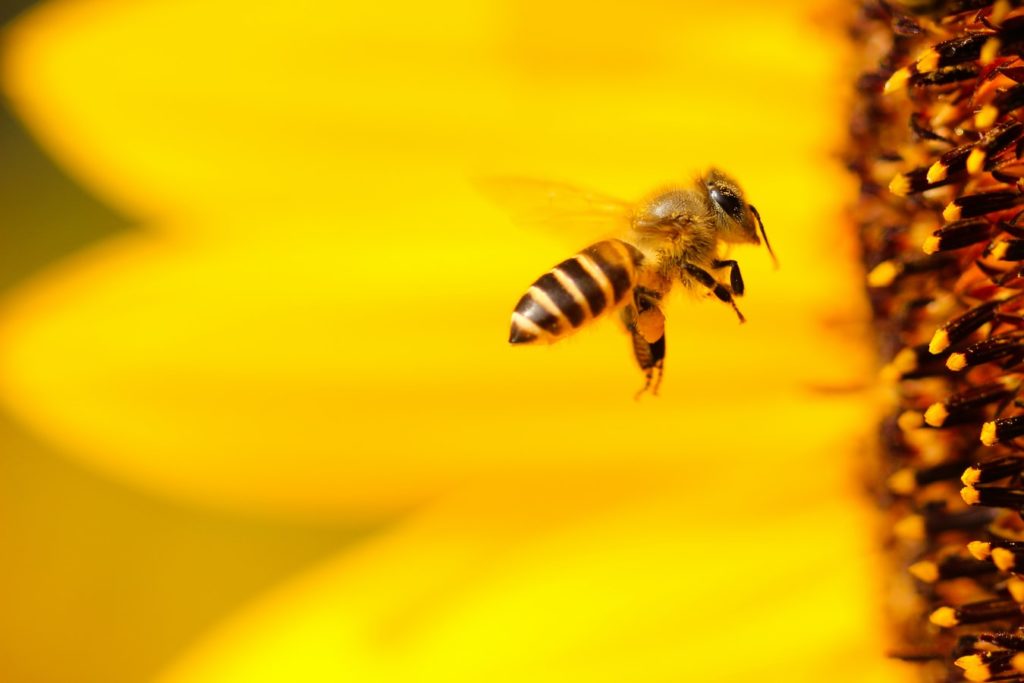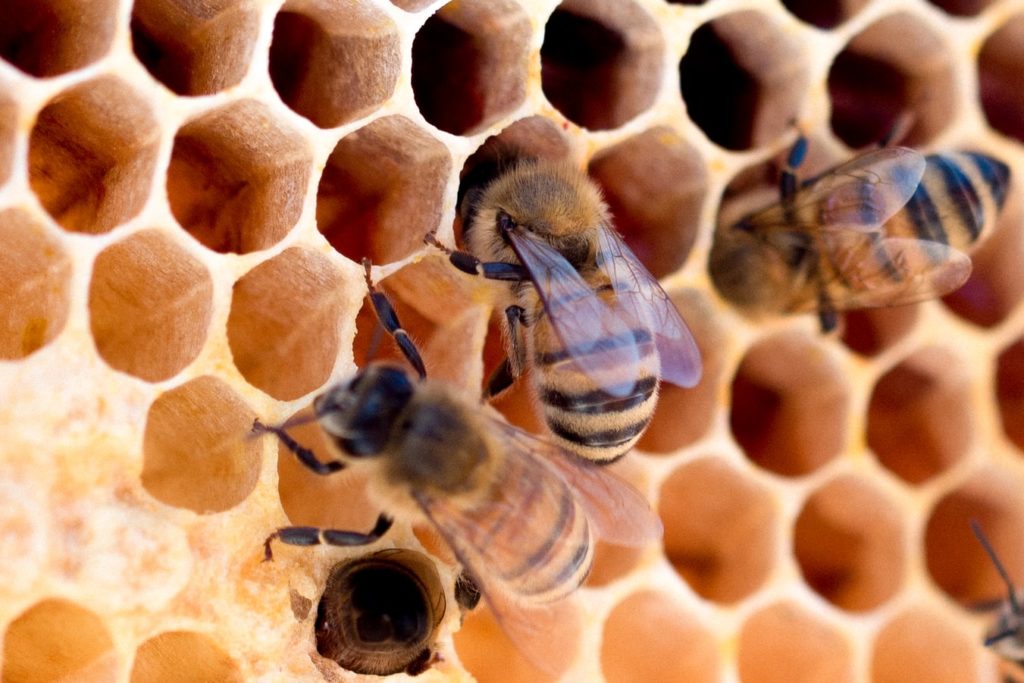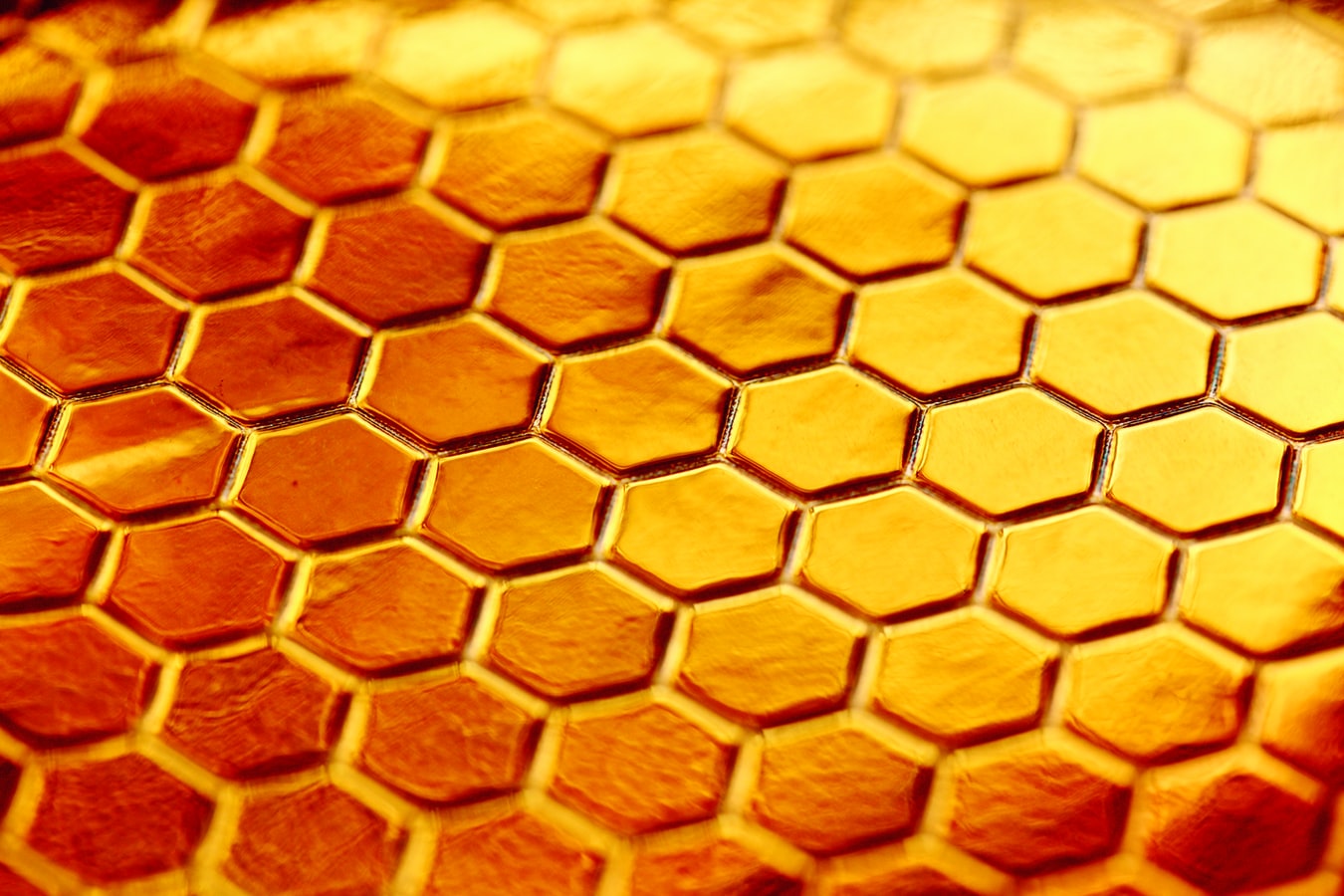The brain of a bee is smaller than a grain of rice! Despite its efficient size, these six-legged insects do much more than gather nectar from flowers to make honey. They also help our ecosystem flourish by supporting the growth of flowers, plants, and trees and—when trained—can accomplish some impressive feats like counting and playing soccer.
There are over 20,000 known species of bees with different physical features and habitats, and three kinds of honey bees in a hive: the queen, the worker, and the drone.
Worker bees take care of the queen and the hive. They make many trips a day to various plants and flowers foraging for nectar, pollen, and propolis for themselves and their hives. They drink the nectar (which is later regurgitated as honey) and carry the pollen and propolis on their hind legs, otherwise known as the pollen basket, back to their hive.

Dr. Leonard Foster, a professor in the department of biochemistry and molecular biology at the University of British Columbia, marvels at the foraging prowess of bees. “Their ability to find things is surprising. And not just finding nectar sources, but also being able to find new homes if they’re forced out of their hive. It is amazing.”
As bees travel from flower-to-flower in search of nectar they leave behind pollen residue from previous flowers they’ve visited, allowing plants to grow and produce fruits and vegetables. Honey bees pollinate numerous crops including beets, almonds, blueberries, apples, asparagus, sweet potatoes and garlic.
The honey and pollen they bring back to their hives are fed to baby bees—bee larvae—and the propolis is used as bee-glue to seal gaps and cracks in their honeycombs and in the walls and entrances to their hive.
When bees go out in search of resources for their hive, they encounter diverse kinds of flowers with different shapes, structures, and properties, and it is their job to learn which flowers have the best resources so they can gather them as efficiently as possible.
Some researchers have noted that this capacity to learn which makes bees great foragers and caretakers is likely what helps them excel in studies where they are trained to count, play an insect version of soccer, or perform other non-bee–related tasks to get a reward of sugar water (nectar).

Dr. Sandra Gillespie, a biology professor at the University of the Fraser Valley whose research focuses on pollination ecology says “What these sorts of studies are trying to understand is learning, and bees are great learners. They will learn to do things quickly and effectively to get as much nectar as fast as they can.”
Dr. Foster also remarks that bees have an astonishing propensity for learning new behaviours. He points out that this is useful for them in navigating to and from flowers and collecting resources quickly to bring back to their hive.
Although bees are not actually learning how to count to calculate the cosmos or play soccer for recreational purposes, they are demonstrating sophisticated learning by performing a task they are not used to in order to receive a reward.
As Dr. Mark Winston, professor of apiculture & social insects at Simon Fraser University explains "The bees are acting based on an ability to learn. They learn that they will get a reward—they will get nectar which they usually get from flowers—if they push a ball a certain distance. So, they push it to get the nectar.”
He adds that the bees in the counting studies are making use of their foraging experience. "When they go to and from a flower to forage, they navigate using many overlapping mechanisms but one of them is landmarks. They can learn how to count up to four landmarks as a way of remembering their way to and from a flower.”
Dr. Gillespie who has spent time studying bumblebees observes that bees are adaptable. “As you see from these kinds of studies, you can present bees with something that's out of the ordinary and they're flexible enough to figure it out.”
This adaptability is a trait of bees that Dr. Winston has witnessed in his research as well. Queen honey bees produce a pheromone that signal their presence in a bee colony and attracts worker bees to them. In an experiment conducted by Dr. Winston and his team, a dilute blend of synthetic queen pheromone was sprayed on crops to observe whether it would attract bees to those crops more frequently, and it did.
“Bees have a remarkable set of behaviours,” Dr. Winston emphasizes. “It really does exemplify just some of the marvelous adaptations that bees have and the high level of cognition that is present in an insect that has a really tiny brain compared to us.”
Wanna see some bees in action?
Come visit our honey bees in the Search: Sara Stern Gallery. They’re all the buzz!
